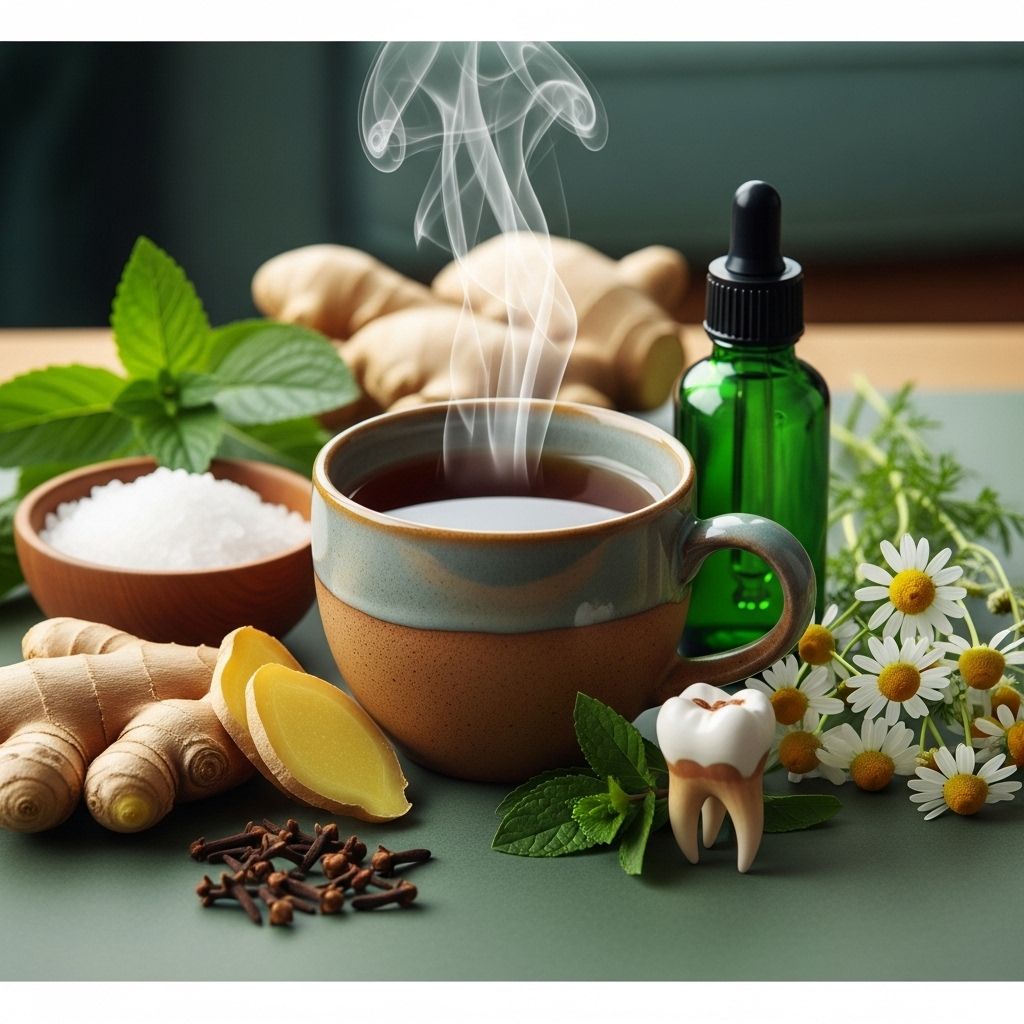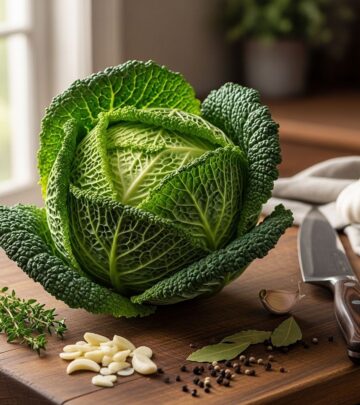15 Proven Home Remedies for Wisdom Tooth Pain Relief: Natural Ways to Soothe Discomfort
Learn about safe, effective home remedies to manage wisdom tooth pain and reduce inflammation before seeking dental care.

Wisdom tooth pain is a common experience, often occurring as these final molars emerge or become impacted in adolescence or early adulthood. The pain can range from mild discomfort to intense throbbing, often accompanied by swelling, tenderness, and difficulty opening the mouth. While long-term relief may require dental intervention, various home remedies offer significant relief by minimizing inflammation, numbing pain, and improving oral hygiene while you await professional care.
Table of Contents
- What Causes Wisdom Tooth Pain?
- When to See a Dentist
- Top 15 Home Remedies for Wisdom Tooth Pain
- Oral Care and Preventative Measures
- What to Avoid When Dealing with Wisdom Tooth Pain
- Frequently Asked Questions
What Causes Wisdom Tooth Pain?
Wisdom tooth pain typically occurs as the third molars try to erupt through the gums, often in a space-constrained area at the back of your mouth. Common causes of this discomfort include:
- Impaction: When the tooth does not fully emerge or grows at an awkward angle, it can press against neighboring teeth or get trapped under the gums, causing inflammation and pain.
- Infection: Partially emerged wisdom teeth create a flap of gum tissue that traps food, debris, and bacteria, potentially leading to pericoronitis—a painful gum infection.
- Cavities and Gum Disease: The far-back location makes wisdom teeth hard to clean, raising the risk of tooth decay and gum infection.
- Pressure and Crowding: Erupting wisdom teeth may crowd or push against existing teeth, causing soreness or alignment issues.
When to See a Dentist
Home remedies provide only temporary relief and are not a substitute for professional dental evaluation. Seek immediate dental care if you experience:
- Severe, persistent, or worsening pain
- Swelling that extends to the neck or jaw
- Difficulty swallowing or breathing
- Fever or pus at the gum
Ongoing wisdom tooth pain, especially with visible swelling or infection, may require antibiotic therapy or extraction by a dentist.
Top 15 Home Remedies for Wisdom Tooth Pain
Evidence and experience show that several simple home remedies can help control wisdom tooth pain. Most work by reducing swelling, numbing pain, or keeping the mouth free of bacteria.
1. Saltwater Rinse
A warm saltwater rinse is one of the safest, most effective remedies for soothing gum irritation. Saltwater acts as a natural disinfectant, helping to reduce bacteria and inflammation. Dissolve half a teaspoon of salt in a cup of warm (not hot) water. Swish the solution around your mouth for 30 seconds, focusing on the painful area, and spit it out. Repeat two to three times daily for relief.
2. Cold Compress or Ice Pack
Applying an ice pack or a bag of frozen vegetables wrapped in a towel to your cheek can help reduce swelling and numb the area. Hold the compress against the painful side for 15 minutes, then remove for 15 minutes. This can be repeated several times per day.
3. Cloves and Clove Oil
Cloves contain eugenol, a natural anesthetic and anti-inflammatory compound. You can use whole cloves by placing one near the sore tooth or dab a small amount of clove oil onto a cotton ball and apply it directly to the painful gum for temporary relief. Remove after a few minutes or once the pain subsides. Avoid using undiluted clove oil in excess, as it can cause chemical burns.
4. Peppermint and Menthol
Peppermint contains menthol, which provides a cooling, numbing effect and acts as a mild analgesic. Rinse your mouth with cooled peppermint tea or place a dampened peppermint tea bag against the affected area. Diluted peppermint oil (or a menthol mouthwash) can also be gently applied to the gums.
5. Onion
Raw onion has been used as a natural remedy due to its antiseptic and anti-inflammatory properties. Bite down or chew gently on a small piece of white or red onion over the painful area for several minutes to let the juices act on the gum, then spit out. If chewing is too uncomfortable, simply hold a piece over the site.
6. Garlic
Crushed garlic releases allicin, a powerful antibacterial and anti-inflammatory compound. To use, gently crush a clove of garlic, mix with a pinch of salt, and apply directly to the gum or tooth. You can also gently chew a garlic clove if tolerable.
7. Aloe Vera Gel
Aloe vera gel is rich in antioxidants and has natural soothing and anti-inflammatory qualities. Apply a small amount of pure aloe vera gel directly to the gum tissue around the wisdom tooth for a calming effect.
8. Cucumber Slices
Chilled cucumber slices can help reduce swelling and provide a soothing effect, especially when used cold. Place a thin, cold slice of cucumber (refrigerated or slightly frozen) over the sore area and rest it there until the pain reduces.
9. Cold Tea Bags
Tea bags, particularly black or green, are rich in tannins—antioxidants with antibacterial and anti-inflammatory properties. Prepare a tea bag as usual, let it cool in the refrigerator, then place it over the sore gum. The coolness and tannins help suppress swelling and pain.
10. Guava Leaves
Guava leaves are known for their natural analgesic, anti-inflammatory, and antimicrobial properties. Fresh guava leaves can be gently chewed on the affected side, or a rinse can be made by boiling the leaves, cooling the water, and using it as a mouthwash.
11. Over-the-Counter Pain Relievers
Non-prescription pain medications such as ibuprofen or acetaminophen can reduce pain and swelling. Always follow dosage instructions and check for allergies or contraindications. Ibuprofen also helps reduce inflammation, making it especially valuable for wisdom tooth pain.
12. Vanilla Extract
Real vanilla extract contains alcohol, which has numbing properties, and acts as an antioxidant. Soak a cotton ball with vanilla extract and hold it against the affected gum for about 15 minutes.
13. Hydrogen Peroxide Rinse (With Caution)
A diluted hydrogen peroxide rinse (mix 3% food-grade hydrogen peroxide with equal parts water) can help kill bacteria and reduce gum irritation. Use care: Do not swallow, and rinse your mouth with water afterward. Overuse can irritate oral tissues.
14. Numbing Gels and Pastes
Dental numbing gels (available at pharmacies) containing benzocaine or similar agents provide temporary relief when applied directly to the gums. Only use as directed, and do not use more than recommended, as overuse or swallowing is unsafe for children and some adults.
15. Good Oral Hygiene Practices
While not a direct remedy, maintaining clean teeth and gums prevents worsening of pain and infection. Carefully brush the back molars with a soft-bristled toothbrush and floss gently around the painful area.
Oral Care and Preventative Measures
Taking care of your oral health is critical, especially when wisdom teeth are coming in. Use the following preventative tips:
- Brush and floss regularly, giving extra attention to the molar region.
- Rinse with saltwater or an antiseptic mouthwash after meals to reduce bacteria.
- Avoid eating sticky, hard, or sugary foods that increase irritation or risk of infection.
- See your dentist regularly for monitoring and early management of problems.
What to Avoid When Dealing with Wisdom Tooth Pain
- Do not use very hot or icy foods directly on the gum, as temperature extremes can worsen pain.
- Avoid hard brushing or poking at the wisdom tooth area, which may aggravate swelling.
- Do not attempt to self-remove a wisdom tooth or pick at it with objects.
- Never put aspirin or other acidic substances directly on the gums, as these can cause burns.
Frequently Asked Questions (FAQs)
How long can home remedies control wisdom tooth pain?
Most remedies provide only temporary relief, lasting from a few minutes to several hours. Persistent pain is a signal to see a dentist, as home care cannot resolve underlying issues such as infection or impaction.
Is it safe to use several remedies at once?
It is generally safe to use a combination of remedies (e.g., rinses, compresses, and over-the-counter medicine), but avoid overusing topical anesthetics or strong essential oils, as they can irritate the tissues.
Can wisdom tooth pain go away on its own?
Sometimes, mild pain caused by teeth breaking through the gum subsides as the area heals. However, recurring or severe pain often indicates a problem needing dental care.
Do clove oil or garlic kill the pain instantly?
Clove oil and garlic provide quick but short-term relief. They numb or reduce inflammation but do not eliminate pain permanently or treat the underlying cause.
When should I stop self-treatment?
If you notice worsening symptoms (such as increased swelling, difficulty opening your mouth, signs of infection, or systemic symptoms like fever), discontinue home remedies and consult a dental professional immediately.
Summary Table: Common Home Remedies and Their Effects
| Remedy | Key Benefit | How to Use | Precautions |
|---|---|---|---|
| Saltwater rinse | Reduces bacteria, soothes gums | Rinse with warm saltwater 2–3x/day | Do not swallow, avoid if severe ulcers |
| Ice pack | Relieves swelling and numbs pain | Apply to outside of cheek 15 min on/off | Do not put ice directly on skin |
| Clove oil | Natural anesthetic, reduces infection | Apply with cotton ball for a few minutes | Do not ingest, dilute for sensitive tissue |
| Garlic | Antibacterial, reduces inflammation | Apply crushed with salt or chew gently | May irritate skin, avoid overuse |
| Guava leaves | Analgesic, antimicrobial | Chew fresh or swish boiled water | Use clean, fresh leaves only |
| Over-the-counter medication | Reduces pain and inflammation | Take as directed | Check for allergies or contraindications |
| Tea bag | Anti-inflammatory, soothes swelling | Cool and press against gum | Avoid sweetened or flavored teas |
| Cucumber slice | Cooling, reduces inflammation | Apply chilled slice to painful area | Use clean utensils, avoid icy cold |
Final Thoughts
While these home remedies can offer important relief for wisdom tooth pain, they are not a permanent solution. Ongoing or severe pain, swelling, or signs of infection require prompt dental attention to avoid complications and ensure your oral health.
References
- https://www.absolutedental.com/blog/10-best-home-remedies-for-wisdom-tooth-pain/
- https://www.broadwayfamilydentalpc.com/blog/ways-to-relieve-painful-wisdom-teeth/
- https://legacydental.com/blog/best-remedies-for-wisdom-tooth-pain-relief/
- https://www.healthline.com/health/wisdom-teeth-pain-relief
- https://www.oralsurgeryarizona.com/soothe-a-throbbing-wisdom-tooth/
- https://www.colgate.com/en-us/oral-health/wisdom-teeth/wisdom-teeth-pain-relief-how-to-find-comfort
- https://www.medicalnewstoday.com/articles/319461
- https://www.coastdental.com/blog/navigating-wisdom-tooth-pain-relief-timing-and-treatment-options
- https://www.mayoclinic.org/first-aid/first-aid-toothache/basics/art-20056628
Read full bio of medha deb












